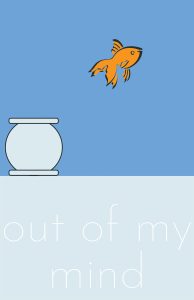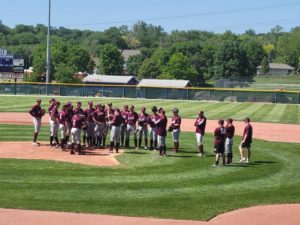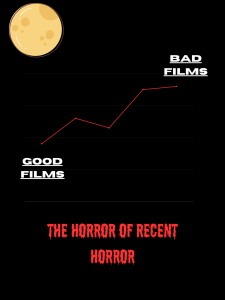The best and worst required high school books
April 1, 2019
I have never replaced an English class reading assignment with a Sparknotes summary. I’ve read every single page of every single chapter from every single required book.
I’m not trying to wave my nerd flag, but I do think it entitles me to have more of an opinion on the books than those who have read less than half of them. When I read a book, I expect to feel something; I want the book to change me, even if only slightly. That entails relating to the protagonists. I find a story much more impactful when I can relate to the person telling the story, hence why my favorite books tend to feature young females who want to see change. These standards, along with comprehensibility and plot, have caused some of the required books to become my favorites and others to become ones I wouldn’t touch with a ten-foot pole.
The five best books I read for classes
A Tale of Two Cities by Charles Dickens
Dickens’ 1859 novel is a story of love, growth, and sacrifice. Taking place in both London and Paris during the French Revolution of the late 1700s, it depicts the brutality of the revolution and the cities’ differences in social and political workings. Many students aren’t a fan of the book because Dickens made it into a lengthy piece with some dry spots. Others struggle with his writing style. The beauty of reading it in English class freshman year is that the teachers have practice not only interpreting the book, but also working with students transitioning from middle school. They can essentially cut away the fluff of old English and leave you with the bare bones story: a wonderfully crafted piece of thrilling romance. Its ending tugs at the heartstrings long after the book’s been put down.
The Book Thief by Markus Zusak
Since being published in 2005, Zusak’s most popular novel has become an international bestseller, been translated into several languages, and even turned into a movie. It follows the life of Liesel, a young girl raised by compassionate foster parents in Germany during World War II. The piece starts with a unique twist: the narrator is not Liesel or someone close to her, but death himself. I read the book freshman year in a choice novel unit. It’s a favorite of a friend and I figured I’d give it a chance. It is the first and only book to have made me cry. Not a single tear sliding down my cheek, but ugly, hiccupping sobs. It gives glimpses into the ugliness and tragedy humankind creates, but more frequently it inspires hope in the possibility that the light is stronger. It’s easy to get lost in and just as hard to put down. While it is a longer read, it’s without a doubt the easiest one of these ten.
The Wife of Bath’s Tale from Canterbury Tales by Geoffrey Chaucer
Chaucer’s original plan for “Canterbury Tales” was to have each of the 30 travellers tell two stories, meaning the book would consist of 60 short stories. He was only able to write 22 total before it was published in 1386. The Arthurian Fairy Tale titled “The Wife of Bath’s Tale” is one of the most popular. It is the journey of a knight who committed a crime and learns a valuable lesson when Queen Guinevere offers to spare his life if he can answer her question. Chaucer may be “an old, dead, white dude” as English teacher Amy Smith always says, but I’ve got to give credit where it’s due. He was a clever, old white dude who was way ahead of his time. This story had a major impact on me when we read it earlier this year because this man has been empowering women for over 600 years with this story. He fought for women’s rights well before it was cool. I’m also a sucker for fairy tales in general because they’re a bigger step away from reality than other genres and happy endings are typically part of the package. It’s the shortest read of the lot, but the old English can get a bit funky.
The Joy Luck Club by Amy Tan
Tan is well known for exploring the experiences of Chinese-Americans and mother-daughter relationships in her books. Her most popular novel, “The Joy Luck Club,” recounts the experiences of four pairs of mothers and their daughters and the strains that can arise from pressure, distance, and growing up in different times and cultures. It’s a standout book compared to the rest I’ve read in my high school career because it is one of the few to explicitly focus on relationships and show them in a realistic light. Many of the others focus solely on one protagonist and rarely dig deep into their flaws or bad decisions unless they’re written to be a ”flawed character.” The characters of “The Joy Luck Club” are not glorified and use their flaws and mistakes as opportunities to grow into better women and to better their relationships. I’ve heard it labeled as “boring” because it doesn’t have the same type of intensity the others do. I believe that what it lacks in action is made up for by its emotional intensity.
The Scarlet Letter by Nathaniel Hawthorne
Considered Nathaniel Hawthorne’s masterwork, “The Scarlet Letter” is allegedly based on a true tale of a woman similar to heroine Hester Prynne who is accused of adultery and must deal with the repercussions as she raises her daughter in a Puritan colony. To the shock and disgust of many others, Nathaniel Hawthorne’s piece is my favorite book and not just my favorite required book either. The only word I can use to describe it is juicy. It’s like reading an episode of “The Real Housewives.” It was one of the most difficult reads junior year, and is similar to “A Tale of Two Cities” in the sense that once you get past the old English, it’s an incredible story. It contains multiple plot twists and surprises that left me excited for class discussions, and tons of symbolism that add another layer to Hawthorne’s genius.
The five worst books I read for classes
Beowulf by Unknown
Originally an Anglo-Saxon oral tradition told to get soldiers pumped for battle, “Beowulf” is the somewhat true story of a warrior with extraordinary strength, bravery, and honor. While the actual author is unknown, it was the first book written in “English” by a priest who took the liberty of sprinkling in his Christian beliefs and has been made into several movies. I don’t understand how this story gets anybody ready for anything but a nap. Nothing about it inspires me to charge into battle ready to lay down my life. It is literally battle after battle recounted in a way that’s confusing and excitement-killing. It doesn’t help that even after being translated from primitive English, it still reads like someone put the biggest words they could find in a hat and pulled them out to make sentences.
Fahrenheit 451 by Ray Bradbury
In Bradbury’s 1953 dystopian novel, firemen no longer respond to emergency calls, but instead are tasked with burning books, all of which are outlawed. Guy Montag is a fireman who finds himself questioning the morality of his job after spending time with his young and nature-loving new neighbor. I entered sophomore year expecting it to be the best book I would read that year, and maybe even my whole life based on the sheer number of people I’d heard raving about it. I was thoroughly disappointed. It was so packed with symbolism and things you had to infer that the class discussions were more us trying to piece together how in the world something only mentioned once was supposed to have such a huge impact on the rest of the story and make us jump to ridiculous conclusions. It wasn’t the worst book I read that year, but I will never understand the hype behind it.
The Adventures of Huckleberry Finn by Mark Twain
Mark Twain’s “The Adventures of Huckleberry Finn” is a satirical piece that follows his previous book “The Adventures of Tom Sawyer.” Finn wants adventure from his life and in looking for it stumbles across Jim, a runaway slave who becomes a protector and friend. As they travel the Mississippi River together, reckless but well-intentioned Finn survives several potentially life-ending situations and causes trouble while, to his surprise and sometimes dismay, he grows to care for Jim despite his preconceived notions and the racism of the time period. It felt like we spent a month of junior year reading the book. When we finished it, I couldn’t remember what happened at the beginning. The test had to skim the surface because it’d be the size of an ACT if it even focused on the main points of each chapter. That’s not even the worst part. Twain wrote it in a thick southern dialect that I could only understand if I was listening to an audiobook and following along. Reading assignments that would typically take me fifteen minutes or less took closer to thirty minutes because I couldn’t read at my own pace and had to keep with the narrator, which was extremely frustrating and made it that much harder to pay attention.
Of Mice and Men by John Steinbeck
Set during the Great Depression, Steinbeck’s book focuses on friendship and loneliness. It follows George and Lennie, two migrant workers travelling all around California looking to earn enough money to achieve their dreams. I hated the book before I even opened it. I had experience with other Steinbeck novels and grew to despise his writing style. The man takes a whole page to describe simple and plain scenery in all of his books. I was convinced “Of Mice and Men” would not break the cycle and my nightmarish predictions became reality. It was incredibly slow until the end with constant, unnecessarily long and detailed descriptions of characters and the settings. I don’t understand how we consider his books American classics that must be read. People claim they teach valuable lessons on hard topics like greed, but at what cost? I guarantee there are hundreds of books that get the lessons across better and are ten times as entertaining.
The Absolutely True Diary of a Part-Time Indian by Sherman Alexie
Native American author, poet, and filmmaker Sherman Alexie takes inspiration from his experiences growing up on the Spokane Indian Reservation and his ancestors from several tribes. “The Absolutely True Diary of a Part-Time Indian” is told by budding cartoonist Arnold “Spirit” Jr. who is bullied because he was born with excess spinal fluid on his brain that left him with a lisp and stutter. When he follows the advice of his teacher to get off the reservation, he’s faced with a whole new set of challenges. Juvenile is the only word I believe can sum the book up. Freshmen boys are especially partial to it because it’s chock full of childish drawings that take up half of seemingly every other page and mentions masturbation. I can not give you one good reason for reading it. I didn’t learn anything new culture-wise, it didn’t push me to become a better reader, and it had no emotional impact. It read like a person with no sense of humor trying to do a stand-up skit; you can see the effort being put out, but the delivery is horrendous and ends up giving everyone secondhand embarrassment.






